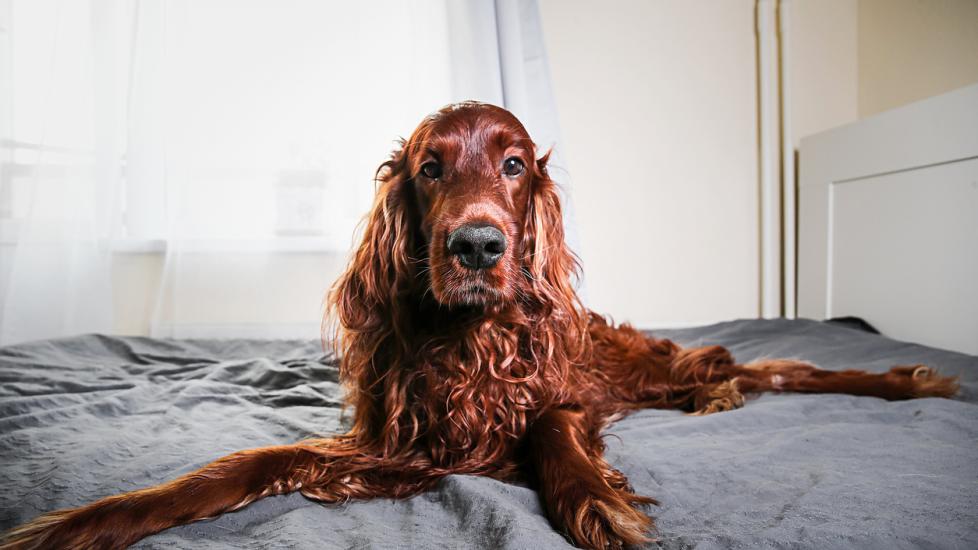Introduction: The Irish Setter is a graceful and energetic gundog known for its sleek appearance and friendly nature. Originally bred as an all-purpose hunting companion, this elegant breed has also become popular as a family pet due to its playful personality and affectionate disposition.
Lifespan: 10 – 12 years on average.
Coat Length: Long and silky with a thick undercoat that provides insulation against both cold temperatures and water.
Alias(es): Red setter or just “Setter” colloquially.
Height (adult): Typically stands between 65 to 75 centimeters at the withers (shoulders).
Place of Origin: Ireland, where it was developed by crossing spaniels with other pointing dogs during the 18th century.
Body Size: Large, muscular frame with long legs designed for speed and endurance over open ground while flushing out game birds such as pheasant and quail.
Shedding Level: Moderately heavy shedders; regular grooming will help keep hair under control and reduce loose fur around your home.
Trainability: Highly intelligent and eager to please, making them generally quick learners who respond well to positive reinforcement techniques like treats and praise during obedience training sessions. However, their strong desire to chase moving objects can be challenging to manage without proper socialization and firm but fair leadership from their human companions.
Recognized By: All major kennel clubs worldwide recognize the Irish Setter as a purebred dog.
Health Issues: Like many large-breed dogs, Irish Setters are prone to hip dysplasia and elbow dysplasia, which can lead to arthritis if left untreated. They may also experience eye problems such as progressive retinal atrophy (PRA) and gastric torsion (bloating). Regular veterinary check-ups are essential for early detection and treatment of any health issues.
Exercise Needs: These active dogs require daily exercise to maintain their physical fitness and mental stimulation. A brisk walk or jog followed by some playtime in a fenced yard is recommended. Participation in activities like agility courses or field trials can further satisfy their need for movement and problem-solving challenges.
Temperament: Known for being friendly, outgoing, and good with children when properly socialized. They make loyal companions who thrive on interaction with their families but should not be left alone too often due to their tendency towards separation anxiety.
Grooming: Weekly brushing is necessary to prevent matting and remove dead hairs. Bathing should only be done when needed as frequent bathing can strip the skin of natural oils leading to dryness and irritation. Trimming nails regularly is important to avoid painful splitting or cracking.
Popularity: Popular among hunters and those seeking a high-energy, loving family pet. Their striking red coats have made them recognizable symbols in art and literature throughout history.
Fun Fact: In ancient folklore, there are tales of how these dogs were used not only for hunting but also for herding cattle because they could cover vast distances quickly across the rolling hillsides common in Ireland.
